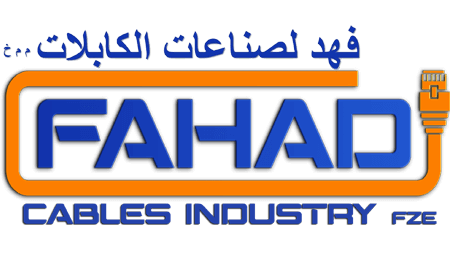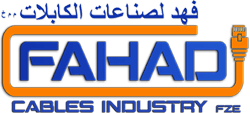Blog
Understanding Category 6A Networking Cables: A Deep Dive by Fahad Cables Industry
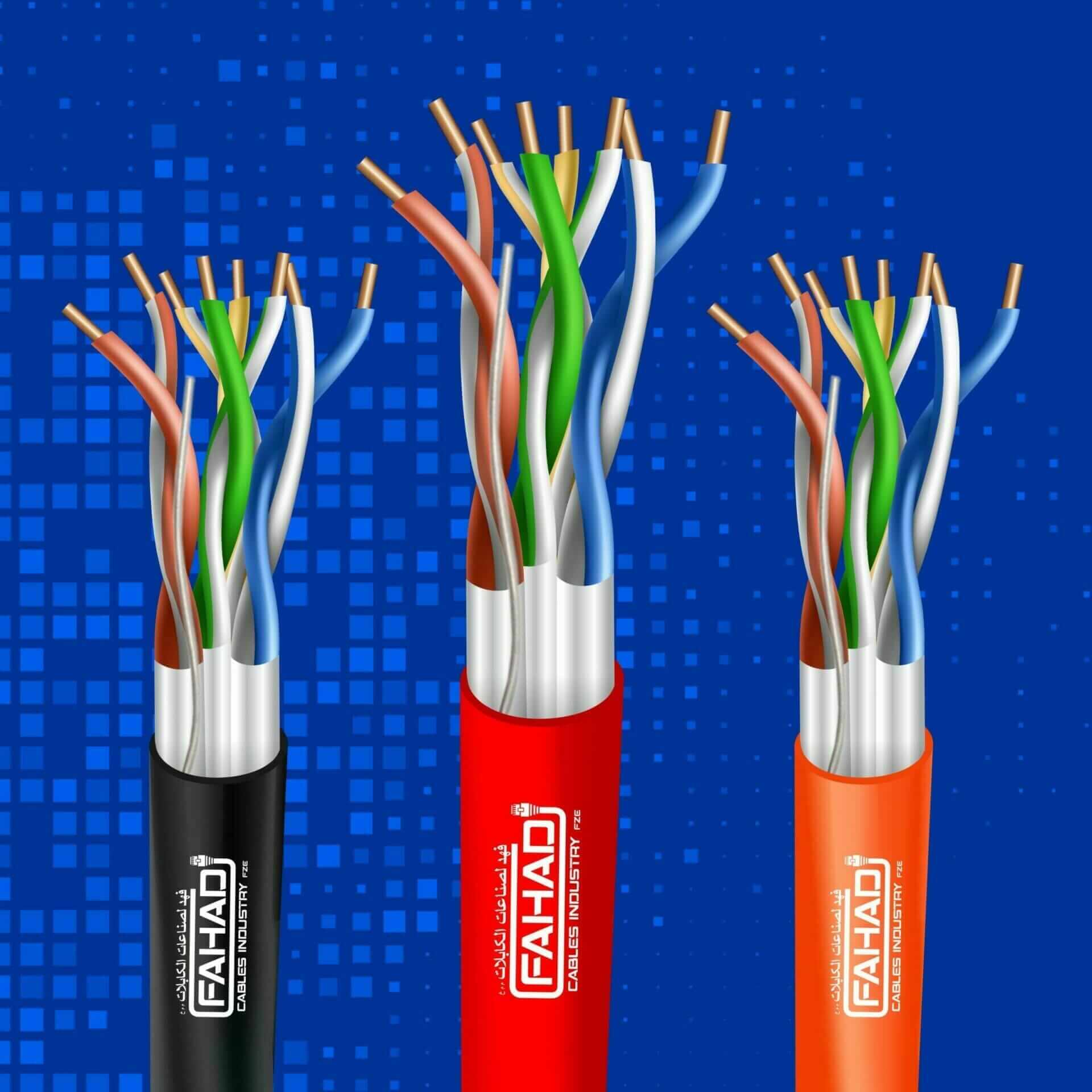
Introduction to Category 6A Cables
Category 6A (Cat 6A) networking cables represent a significant milestone in the evolution of Ethernet cables. The journey leading to their development reflects the industry’s continual push toward higher transmission speeds and enhanced performance standards to meet the growing demands of modern networking. Historically, Ethernet cables have undergone several iterations, starting with Cat 5, which was widely used for typical local area networking speeds of 100 Mbps. This was followed by Cat 5e, an enhanced version designed to support Gigabit Ethernet applications.Category 6A Networking Cables
The introduction of Category 6 cables marked a pivotal advancement as they were engineered to handle frequencies up to 250 MHz, paving the way for 10 Gigabit Ethernet over short distances. However, as data transmission needs continued to increase, particularly in data centers and enterprise networks, it became necessary to develop a solution that could support even higher bandwidths and provide improved performance over longer distances.

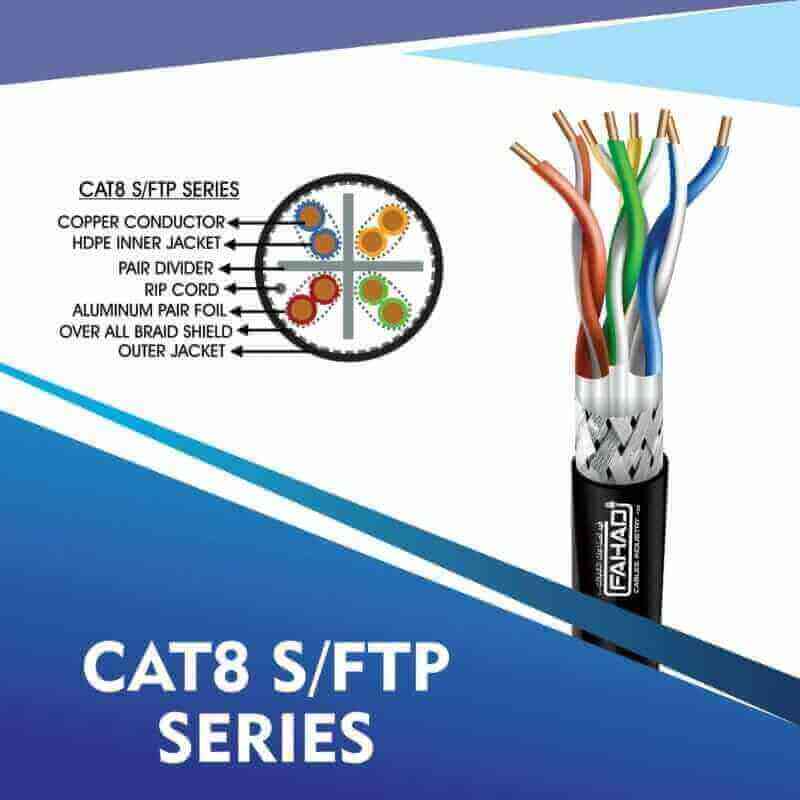
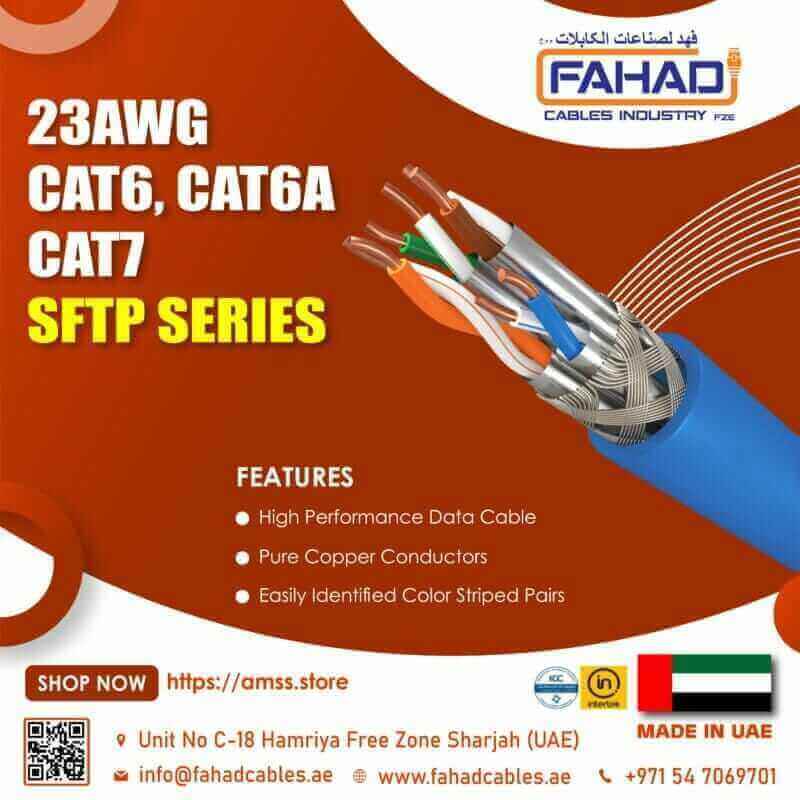
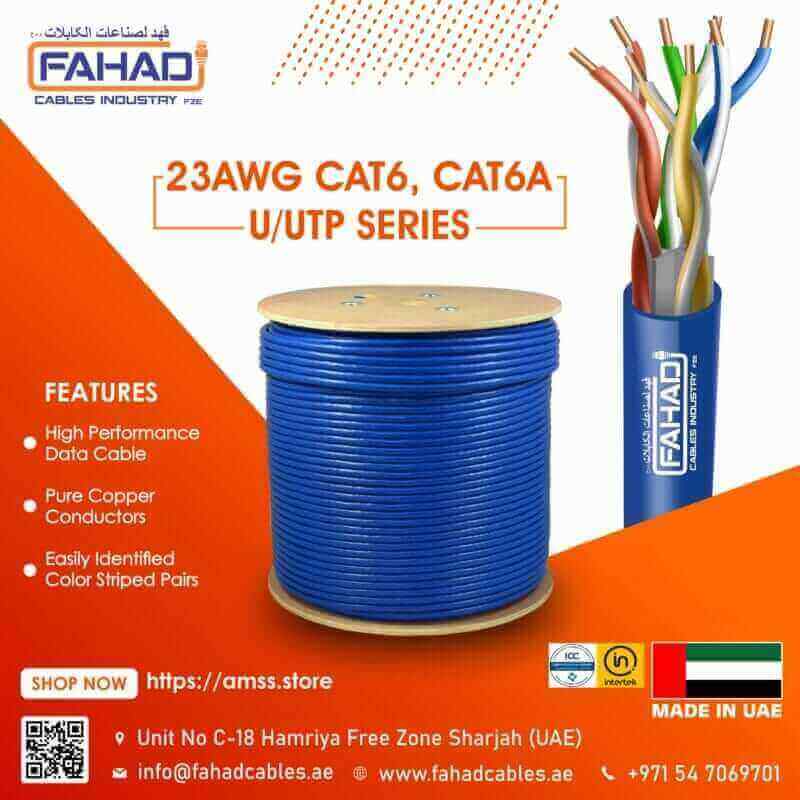
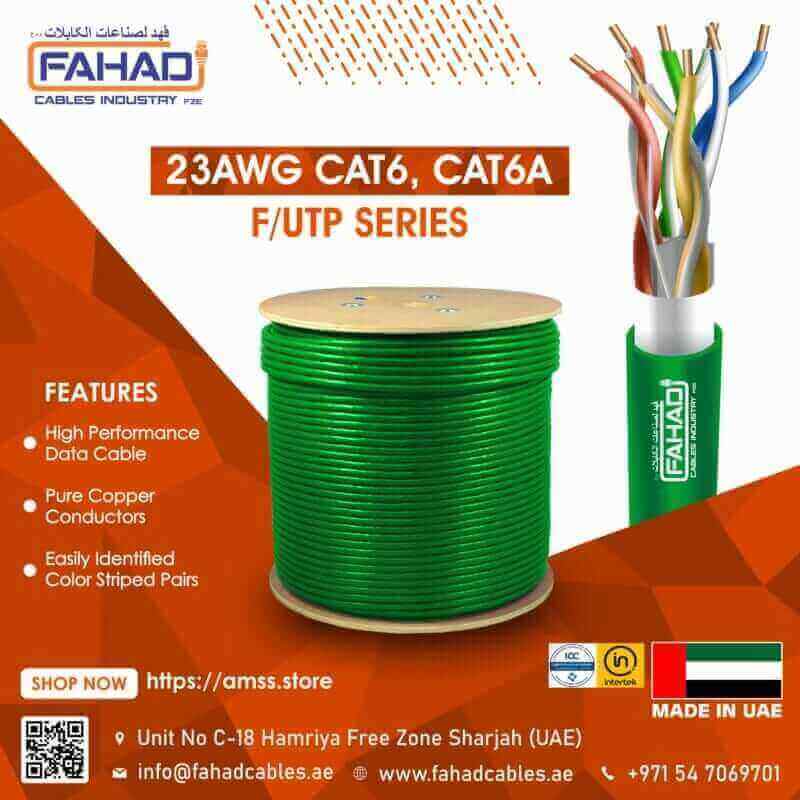
This necessity led to the emergence of Cat 6A cables. The “A” in Cat 6A stands for “augmented,” signifying enhancements that enable these cables to support frequencies up to 500 MHz and facilitate 10 Gigabit Ethernet over distances up to 100 meters. One of the critical technological advancements of Cat 6A cables is their improved alien crosstalk specifications. Alien crosstalk refers to interference from adjacent cables, and minimizing this was essential to achieving higher performance. Cat 6A cables incorporate superior shielding and pair separator technologies that significantly reduce this interference, ensuring a more stable and efficient data transmission.
In summary, the advent of Cat 6A cables reflects the industry’s response to the ever-growing need for higher data transmission speeds and robust performance standards. These cables not only build on the strengths of their predecessors but also introduce key technological innovations that address modern networking challenges, setting the foundation for future advancements in Ethernet technologies.
Technical Specifications and Standards
Category 6A (Cat 6A) cables represent a significant advancement in networking technology, primarily defined by their enhanced specifications and strict adherence to established standards. Governed by technical bodies such as the Telecommunications Industry Association (TIA) and the International Organization for Standardization (ISO/IEC), Cat 6A cables are engineered to meet rigorous performance criteria. A pivotal feature of these cables is their ability to support bandwidths of up to 500 MHz, a substantial leap over their Cat 6 counterparts, thereby facilitating higher data transfer rates and superior network efficiency.
Cat 6A cables are designed to maintain full-speed connections over lengths of up to 100 meters. This extended reach is particularly advantageous for enterprise environments where long cable runs are often necessary. The standardized 100-meter range ensures that these cables can be deployed in a wide variety of settings without compromising performance, thus catering to diverse networking requirements.
Another critical aspect of Cat 6A cables is their advanced shielding options, which play a crucial role in mitigating crosstalk and electromagnetic interference (EMI). The primary shielding types include:
- U/FTP (Unshielded/Foiled Twisted Pair): This type incorporates foil shielding around individual twisted pairs, effectively minimizing internal crosstalk and reducing EMI.
- F/UTP (Foiled/Unshielded Twisted Pair): Featuring an overall foil shield, this configuration offers moderate protection against external interference while being easier to install.
- S/FTP (Shielded/Foiled Twisted Pair): The highest level of protection is provided by a combination of shielding around each twisted pair and an additional overall shield, making it ideal for environments with significant EMI concerns.
By adhering to these stringent specifications and offering various shielding options, Cat 6A cables ensure robust and reliable network performance. Whether used in high-density data centers, commercial spaces, or residential settings, these cables provide the necessary infrastructure for current and future networking demands.
Advantages of Cat 6A Cables
The advent of Category 6A (Cat 6A) cables has ushered in a new era of performance and reliability in networking. One of the most significant advantages of Cat 6A cables is their ability to support higher data transfer speeds, reaching up to 10 Gbps. This impressive capacity makes it a preferred choice for applications requiring substantial bandwidth, such as streaming services and high-speed internet access.
Cat 6A cables excel in high-density environments where numerous network connections operate simultaneously. These cables are designed to minimize crosstalk and electromagnetic interference, ensuring stable connections even in the most challenging settings. This improved performance is particularly valuable for data centers, where uninterrupted data flow is crucial for maintaining operational efficiency.
The enhanced shielding of Cat 6A cables further contributes to their superiority. With this advanced shielding, these cables can effectively block external interference from various sources, including neighboring cables and electromagnetic fields. This robust design is instrumental in environments where maintaining signal integrity is paramount, such as hospitals and industrial settings.
Another noteworthy benefit of Cat 6A cables is their future-proofing capabilities. As the technological landscape evolves, the demand for greater bandwidth and faster speeds continues to grow. Cat 6A cables are well-positioned to meet these emerging needs, making them a strategic investment for organizations preparing for future technological advancements. They support bandwidth-heavy applications seamlessly, ensuring that businesses can scale their operations without overhauling their cabling infrastructure.
In addition to their technical prowess, Cat 6A cables also offer extended operational life and adaptability. They provide the necessary infrastructure for the proliferation of Internet of Things (IoT) networks, which rely on stable and high-speed connections. Thus, Cat 6A stands out as an essential component in modern network solutions, catering to both current requirements and future innovations.
Applications and Use Cases
Category 6A (Cat 6A) networking cables stand out for their robust performance and adaptability across various applications, marking them as a preferred choice in numerous networking scenarios.
In commercial settings, Cat 6A cables are integral to managing the ever-growing data demands of modern offices and enterprises. These cables support data rates of up to 10 Gbps, ensuring seamless connectivity for applications requiring high bandwidth. For instance, in an open-plan office with multiple workstations utilizing cloud-based applications and video conferencing, Cat 6A cables help maintain a reliable network, minimizing latency and enhancing productivity.
Data centers are another critical environment where Cat 6A cables shine. With their enhanced bandwidth capabilities and superior performance over longer distances than earlier Cat 6 cables, Cat 6A is optimal for connecting servers, storage systems, and networking equipment. This ensures that data centers can efficiently handle large volumes of data transfer, essential for supporting services like virtualization and big data analytics.
In residential settings, homeowners can benefit significantly from Cat 6A cabling, particularly in smart homes where numerous IoT devices interact over the network. For those with high-definition video streams, a reliable connection is paramount. Cat 6A mitigates the risk of signal interference and crosstalk, providing a stable and robust connection for streaming 4K or even 8K content on multiple devices concurrently.
Gamers also find Cat 6A cables advantageous, as the steady and high-speed data transfer rate helps reduce lag and latency, which are critical factors in online gaming. Whether setting up a gaming station or managing an esports arena, Cat 6A cables ensure that every command and communication happens in real-time, providing a competitive edge.
Overall, Cat 6A networking cables are versatile, enhancing network performance and reliability across various applications. Their ability to support extensive bandwidth requirements, coupled with reduced interference, makes them an ideal choice for modern high-speed network infrastructures, whether in commercial spaces, data centers, residential installations, or gaming environments.
Fahad Cables Industry’s Cat 6A Product Line
Fahad Cables Industry offers an impressive array of Category 6A networking cables, catering to diverse needs in today’s high-speed data transmission landscape. Our Cat 6A product line stands out through its adherence to rigorous quality standards and the incorporation of advanced technological features. Renowned for high performance and reliability, our Cat 6A cables support up to 10 Gbps data transfer rates over 100 meters of copper cabling, making them ideal for both commercial and residential installations.
Our product line includes various models designed to meet different market demands. The “Fahad Cat 6A Ultra” is our flagship model, featuring superior shielding and reduced crosstalk, essential for maintaining signal integrity in densely populated network areas. Additionally, “Fahad Cat 6A Pro” offers enhanced durability with its robust outer sheath, resistive to environmental stress, making it suitable for outdoor installations.
A unique selling point of Fahad Cables Industry’s Cat 6A cables is our commitment to quality control and certification. Each cable undergoes stringent testing to comply with ISO/IEC 11801, ANSI/TIA-568-C.2, and RoHS standards. These certifications assure our customers of the safety, efficiency, and non-toxic nature of our products. Moreover, our cables are constructed using pure copper, ensuring optimal conductivity and minimal signal loss, thereby enhancing overall network performance.
We also emphasize environmental sustainability and durability, using high-quality, low-smoke zero halogen (LSZH) materials that minimize toxic smoke emissions during possible fire incidents. This not only guarantees user safety but also aligns with global environmental standards. To further affirm our commitment to excellence, each cable is labeled with serial numbers for batch tracking, ensuring transparency and reliability from manufacturing to delivery.
With a strong focus on innovation and customer satisfaction, Fahad Cables Industry continues to lead in providing reliable, high-performance networking solutions. Our Cat 6A cables are a testament to our dedication to engineering excellence and meeting the ever-evolving demands of the networking industry.
Installation Guidelines and Best Practices
Ensuring the reliable performance of Category 6A networking cables requires meticulous attention to installation procedures. Adhering to best practices minimizes the risk of performance issues related to crosstalk and electromagnetic interference (EMI).
Minimizing crosstalk and EMI begins with maintaining an appropriate distance between Cat 6A cables and potential sources of interference, such as power lines and fluorescent lighting. It is crucial to follow the manufacturer’s guidelines on separation requirements to mitigate these disturbances. Additionally, using shielded Cat 6A cables in high-interference environments can further enhance data integrity.
Another key consideration is preserving the cable’s bending radius. Exceeding the recommended bend radius, typically four times the outer diameter of the cable, can impair performance and structural integrity. Installers should take care when routing Cat 6A cables in tight spaces, ensuring the bends are gradual rather than sharp.
Ensuring secure terminations is paramount for optimal signal transmission. It is advised to use high-quality connectors that are specifically designed for Cat 6A cables. Termination should follow the TIA/EIA 568 standards to guarantee uniformity and reliability. A reliable termination tool, certified for use with Cat 6A connectors, streamlines the process while reducing the risk of improper connections.
Additional recommendations include maintaining proper cable slack management and labeling. Excessive slack should be avoided to keep the pathways streamlined, whereas labeling facilitates future network troubleshooting and maintenance.
Several tools and accessories can aid in a successful Cat 6A cable installation. Cable testers ensure that each connection meets performance standards. Cable management accessories, like Velcro straps and cable trays, help in organizing and securing cables. Additionally, the use of proper cable jackets and conduits protects against physical damage.
By adhering to these best practices, installers can ensure that Cat 6A networks perform at their peak, maintaining the robust speeds and bandwidth that modern applications demand.
When assessing Ethernet cables for your networking needs, it’s imperative to understand the differences between various categories, such as Cat 5e, Cat 6, Cat 6A, and Cat 7. Each type has distinct characteristics that influence performance, cost, and ideal use scenarios.
Performance Metrics
Category 5e (Cat 5e) cables are designed to handle frequencies up to 100 MHz, making them suitable for networks running at speeds up to 1 Gbps. While they are cost-effective and reliable for basic networks, they lack the capability to support higher bandwidth requirements that newer technology demands.
Category 6 (Cat 6) cables improve on Cat 5e by supporting frequencies up to 250 MHz, effectively enabling data transfer rates up to 10 Gbps over shorter distances, typically 55 meters. However, they struggle to maintain these speeds over longer distances, making them less ideal for extensive network setups.
Category 6A (Cat 6A) cables are a notable upgrade, supporting frequencies up to 500 MHz and maintaining 10 Gbps speeds over distances up to 100 meters. This makes Cat 6A cables perfect for high-performance networks where both speed and distance are critical factors. Their enhanced shielding helps to minimize crosstalk and electromagnetic interference (EMI), improving overall network stability.
Category 7 (Cat 7) cables push the envelope further, accommodating frequencies up to 600 MHz with data transfer rates of 10 Gbps over 100 meters, similar to Cat 6A. However, they also feature superior shielding techniques, like individually shielded pairs (S/FTP), making them an excellent option for environments with significant EMI concerns.
Cost Considerations
The price of Ethernet cables generally correlates with their performance. Cat 5e is the most affordable, followed by Cat 6, Cat 6A, and finally, Cat 7. While Cat 5e offers a budget-friendly solution for basic networks, investing in higher categories like Cat 6A or Cat 7 can be worthwhile for future-proofing and ensuring maximum performance in demanding environments.
Ideal Use Cases
For simple home networks or small offices with basic internet needs, Cat 5e cables are sufficient. Cat 6 cables suit moderately demanding setups that require faster internetworking over short distances. For environments where both high speed and extended reach are crucial, Cat 6A cables emerge as the optimal choice. Lastly, Cat 7 cables are well-suited for data centers, highly sensitive environments, or applications where minimizing EMI is paramount.
Future Proofing Your Network with Cat 6A
As technological advancements accelerate, the demands on networking infrastructure continually evolve. Emerging trends such as 5G, smart homes, and expanding IoT ecosystems are driving requirements for higher bandwidth and faster data transmission rates. Category 6A (Cat 6A) cables have emerged as a pivotal solution to meet these heightened demands and future-proof your network.
Cat 6A cables are designed to support data transfer rates up to 10 Gbps over a distance of 100 meters, making them ideal for environments where high-speed data transmission is crucial. Compared to its predecessors, Cat 6A offers significantly reduced alien crosstalk and improved signal-to-noise ratio, thus ensuring a more stable and reliable connection under heavy data loads. In the context of 5G and smart home technology, these attributes are indispensable. The ever-growing number of connected devices in homes—ranging from smart thermostats to security cameras—relies on a robust and responsive network to function optimally.
Moreover, the expansion of IoT ecosystems is exponentially increasing the number of devices requiring simultaneous connectivity. Businesses and homes alike are deploying an array of IoT applications, from industrial control systems to home automation devices. Cat 6A cables rise to the occasion, providing the necessary bandwidth and reliability to support these intricate networks effortlessly. By investing in Cat 6A infrastructure, one can avoid the frequent and costly upgrades associated with meeting future connectivity demands.
High-quality Cat 6A cables ensure longevity and performance, enabling organizations and homeowners to fully leverage technological advancements without the need for constant rewiring. This foresight not only secures immediate benefits but also guarantees that the network remains viable and efficient as new technologies and applications emerge on the horizon. Investing in Cat 6A is more than just a preparative measure; it is a strategic approach to achieving long-term network sustainability and performance.
